No less than thirty new pubs opened in the town and near proximity during the 1800s!
During the 1820s and 30s, the government was keen to promote the drinking of beer rather than spirits, (especially gin), to combat widespread drunkenness. Beer was safer to drink than water, which was untreated, but it was too expensive for many working people because it was taxed. The Beerhouse Act 1830, introduced by the Duke of Wellington’s government, abolished beer tax and extended the opening hours of public houses from 15 to 18 hours a day.
During this period the middle of the High Street was the focus of development as the cattle and corn market was held in the street there. Market goers were spoilt for choice as there were two hotels – the Red Lion and the White Horse – on the south of the road and three hostelries – the Sun, the Three Tuns and the Black Horse – on the north side. The Ram was just a short stroll from the market, and the Wheatsheaf and the Rock Brewery and Beerhouse were also trading on the High Street by 1840.
Dorking was a stop on coaching routes between the south coast and London and many of the larger establishments provided refreshment and accommodation, stabling, and a change of horses for travellers. Many of the stabling yards can still be seen today.
The arrival of the railway spawned the Station Hotel (the Pilgrim), the Star and Garter (Lincoln Arms), and the Railway Arms (Stepping Stones).
In 1892 there were 46 licensed pubs and beerhouses in the parish of Dorking – one pub for every 238 residents.
It has been speculated that Dorking had the most pubs per head of population in England. Its residents were indeed well catered for – but the town cannot compare with either Norwich, which had 638 licensed establishments, (1 to every 121 inhabitants), or Gosport, which served a naval clientele and boasted 123 pubs in a square mile!
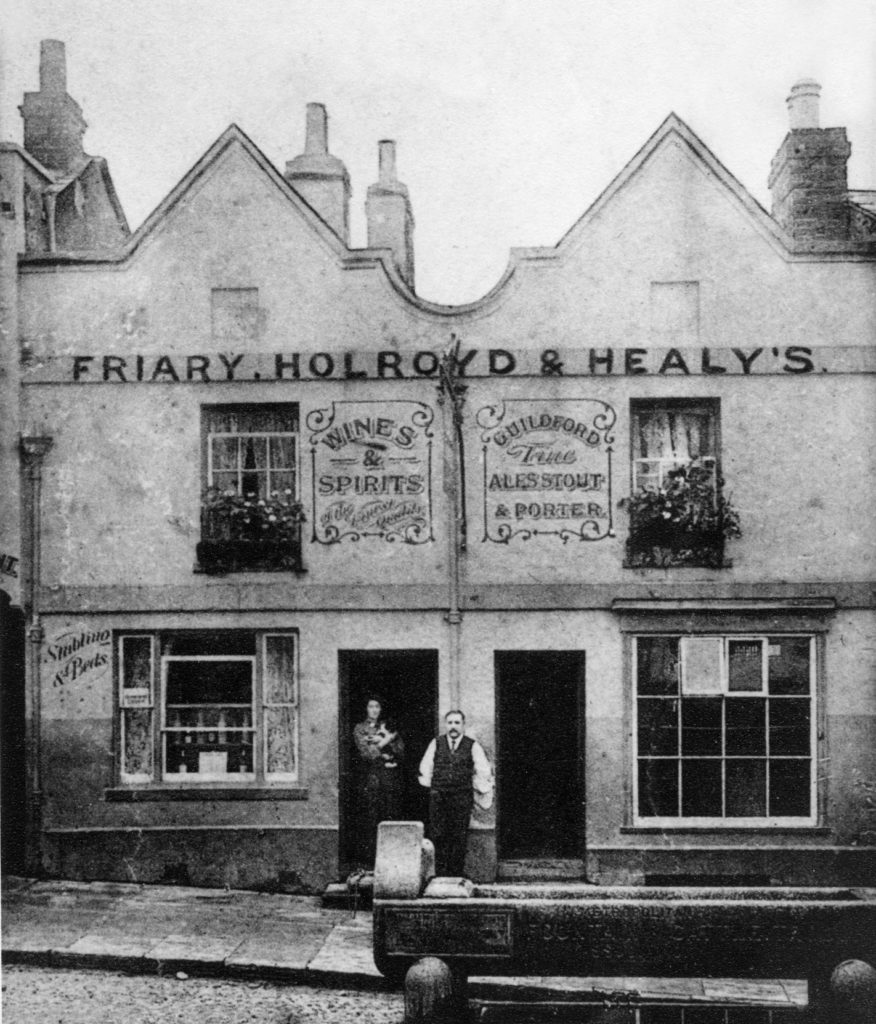
The Black Horse – c1900
A survey in 1903 described the Black Horse’s customers as ‘lower working class and loafers’! Much trade was done in pubs: ‘corn pitching’ – tossing corn onto the pub floor to be inspected for bidding by auction – avoided (or at least reduced) the fees for trading in the market. In 1906 the Black Horse was demolished and later rebuilt as the new Three Tuns, replacing the previous pub of the same name two doors away. The market was relocated from the High Street to the old Black Horse yard in 1926; the archway entrance to the market has been preserved and forms the rear pedestrian entrance to St Martin’s Walk.
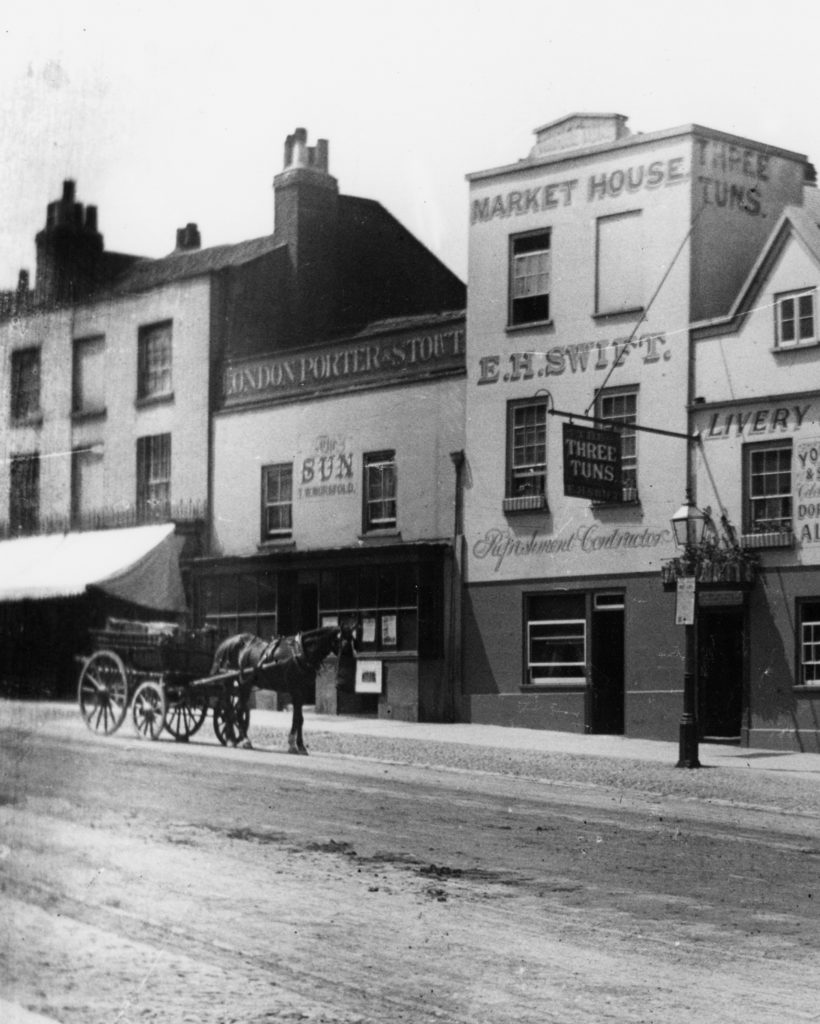
The Sun – 1890’s
The Sun was an extensive property with a parlour, a bar-parlour, smoking room, private sitting room and kitchen, four bedrooms, and its own brewery. In 1859 the brewery moved to Mill Lane. Henry (Harry) Jupp, who was the landlord in the 1870s, was a Surrey opening batsman. He also played for England where he opened the batting in the first two tests against Australia in Melbourne in 1876/77. He was England’s top scorer with 63 runs in the first innings and played alongside WG Grace in the 1880 England team.
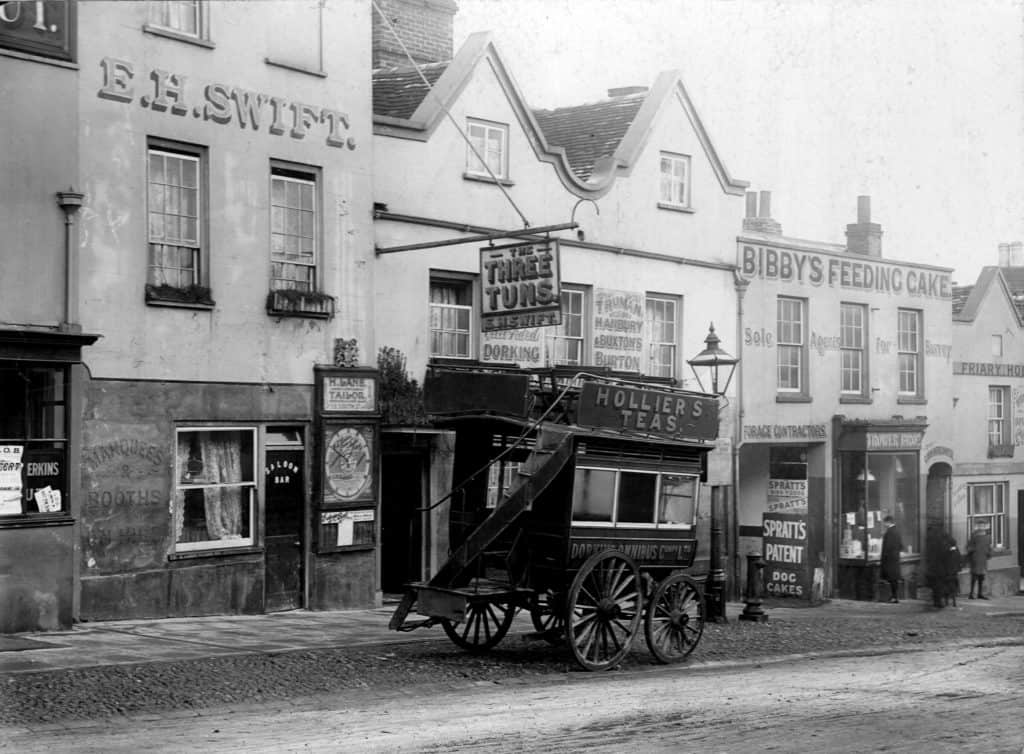
Three Tuns – 1890’s
The Three Tuns was originally called the Three Jars. In 1914 it was rebuilt (and later extended) on the site of the demolished Black Horse. In the early 1900s the landlord ran one of Dorking’s first motor buses down to Holmwood from outside the inn.

The White Horse – 1894
Parts of the White Horse building date back to the 1400s. The inn flourished during the coaching era, when coaches from London stopped at the inn for refreshments en route to Horsham or towns on the south coast. From 1823 until 1848 the keeper was William Penn who was descended from his namesake, the Quaker founder of Pennsylvania.

The Ram Inn
The Ram was situated on the corner of the High Street and Ram Alley (now Dene Street). In the 1830s and 40s landlord John Bellchambers gave an annual lunch for his guests. In a corner of the room, he would place a loaf of bread eight feet high, which, according to newspaper accounts, was ‘soon sliced to nothing’.
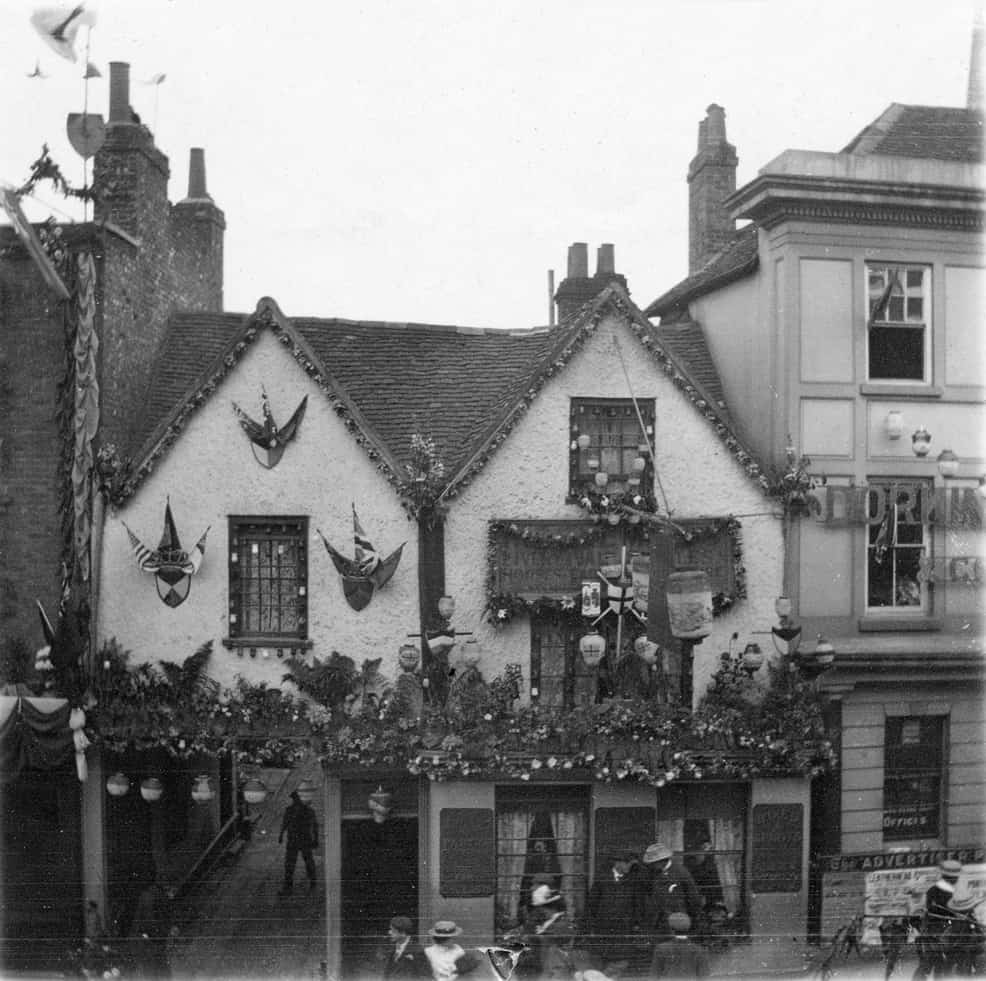
The Wheatsheaf – 1880
There has been a building on the site of the Wheatsheaf from at least the 1300s. In the early 1800s the inn-keeper, Thomas Philps, was known for a huge hog that had been reared on the premises. Weighing 1,036 lbs, and still growing, it was reputed to be the largest in England, until both it and its keeper vanished. A cavern leading under the road from the pub was used for cock fighting.
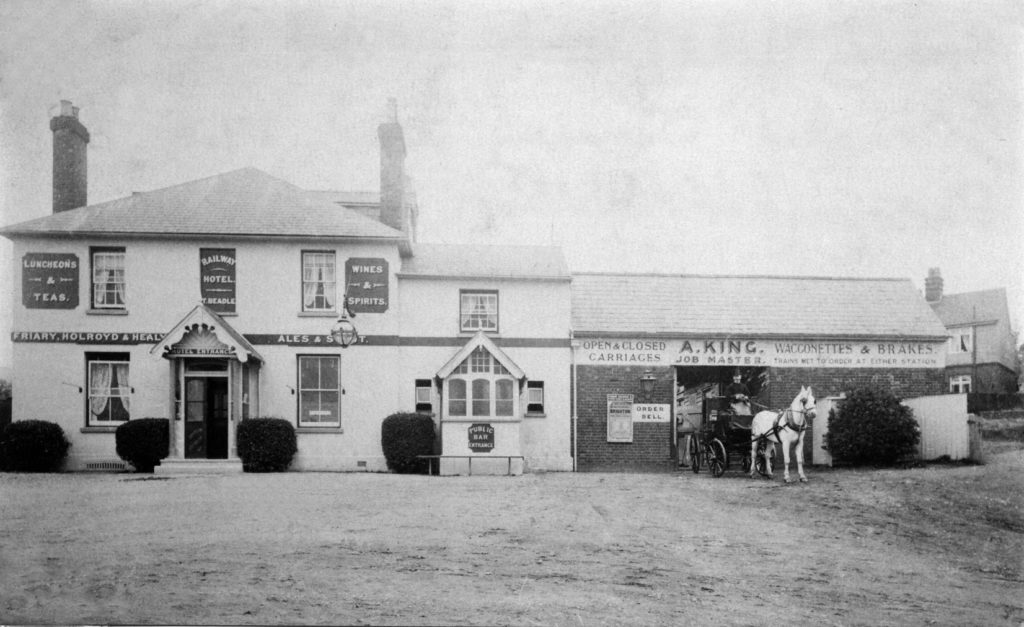
The Pilgrim – 1910
The Railway Hotel, as the Pilgrim was originally called, was opened in 1849 to serve the needs of travellers using Dorking Station (now Dorking West). Sometime later, Arthur King, took the opportunity to establish a business in a building adjoining the inn, advertising ‘Open and Closed Carriages, Waggonettes and Brakes’ to convey passengers into the town for six pence. The service could be disrupted, however, whenever the fire brigade needed his horses.
Last : Opening Time
Next : Last Orders

